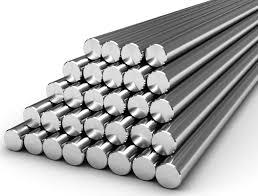
Exploring Titanium Bar Prices: Factors, Trends,
When it comes to finding the best deal on titanium bars, it’s not just about the numbers; it’s about understanding the factors, trends, and cost determinants influencing titanium bar prices. Titanium is a remarkable metal known for its exceptional strength-to-weight ratio, corrosion resistance, and biocompatibility. These qualities make it highly sought after in various industries, including aerospace, medical, and manufacturing. This comprehensive guide will delve into titanium bar pricing to help you make informed decisions.
The Basics of Titanium Bars
Factors Affecting Titanium Bar Prices
Grade and Alloy
Titanium bars come in different grades and alloys, each with unique properties. Commercially pure titanium is the most affordable option, while titanium alloys are more expensive due to their enhanced characteristics. The grade and alloy you choose significantly impact the price.
Size and Dimensions
The size and dimensions of a titanium bar play a crucial role in determining its price. Larger bars with specific dimensions may be more expensive due to the increased raw material and processing costs.
Market Demand
Like any other commodity, titanium bar prices are influenced by market demand. When industries with high titanium consumption, such as aerospace and medical, are in a growth phase, prices tend to rise.
Supply Chain
The complexity of the supply chain also impacts prices. For example, if a titanium bar has to go through several intermediaries before reaching the end user, it may be pricier due to added markups.
Manufacturing Process
The method used to manufacture titanium bars can affect their cost. Bars produced through specialized processes, such as powder metallurgy or hot isostatic pressing, may command a higher price.
Quantity and Volume
Bulk orders often come with volume discounts. The more titanium bars you purchase, the lower the per-unit price is likely to be.
Geographic Location
Prices may vary depending on your geographic location. Shipping costs, taxes, and import/export tariffs can influence your final price.
Current Economic Conditions
Economic factors, such as inflation and exchange rates, can impact the overall cost of titanium bars. It’s essential to monitor these conditions to make cost-effective decisions.
Customization
Customized titanium bars that meet specific industry requirements may be more expensive than standard off-the-shelf options.
Supplier Reputation
Reputable suppliers with a track record of delivering high-quality products may charge a premium for their titanium bars.
Current Trends in Titanium Bar Pricing
Understanding current trends in titanium bar pricing is essential for making cost-effective decisions. As of the latest market analysis, several trends stand out:
- Steady Price Increase: Over the past few years, titanium bar prices have steadily increased due to rising demand in the aerospace, medical, and automotive industries.
- Environmental Regulations: Environmental regulations and sustainability concerns push manufacturers to invest in more expensive, eco-friendly titanium production methods.
- Global Supply Chain Challenges: Recent global events, such as the COVID-19 pandemic, have disrupted the supply chain, leading to price fluctuations and shortages.
- Technology Advancements: Innovations in titanium production and processing technologies affect prices by improving efficiency and reducing production costs.
- Research and Development: Ongoing research and development efforts in the industry will likely introduce new titanium alloys and production techniques, potentially impacting pricing.
Conclusion
In conclusion, the price of titanium bars is influenced by many factors, including grade, size, market demand, supply chain, manufacturing process, quantity, geographic location, economic conditions, customization, and supplier reputation. Keeping an eye on current trends and understanding these price determinants is essential for making informed decisions. Whether in the aerospace, medical, or any other industry that relies on titanium, a thorough understanding of titanium bar pricing will help you navigate the market, secure the best deals, and optimize your operations.



